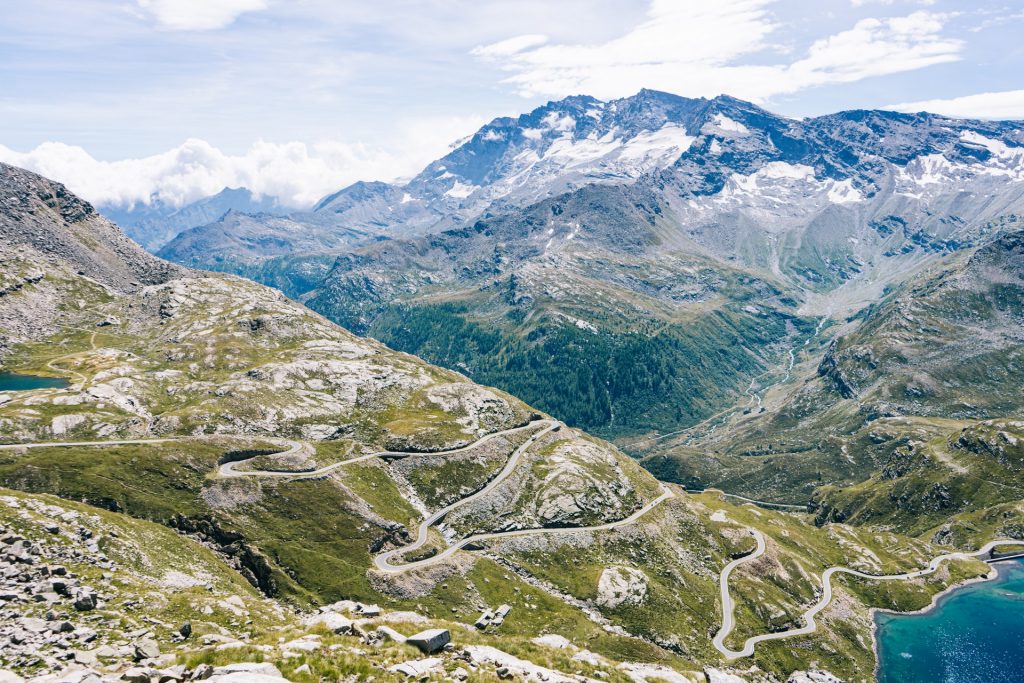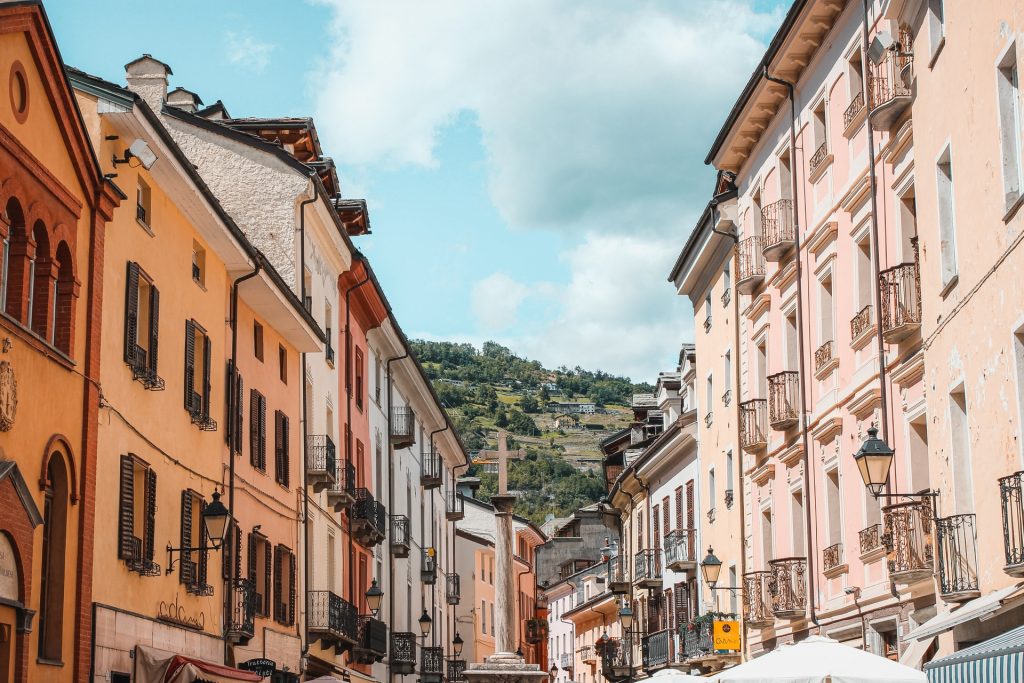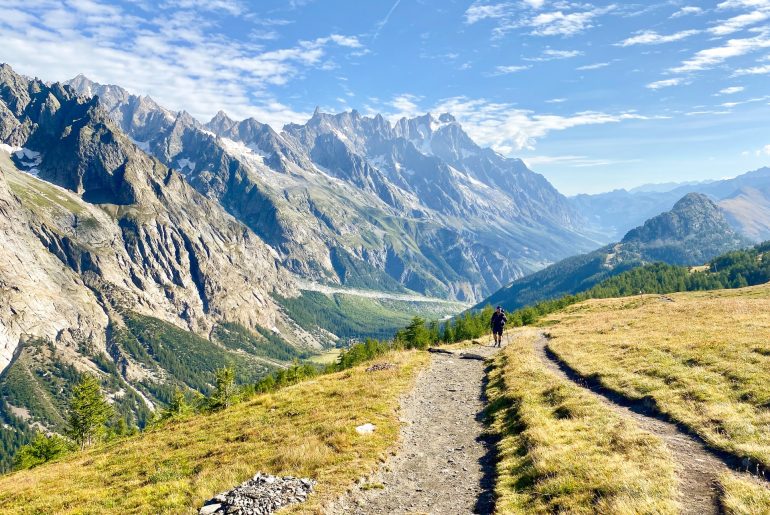Sometimes it so happens that the regions occupying the smallest area in a country are the most interesting ones. Such is the case with the Aosta Valley, which covers just over 3260 square kilometers and offers a number of remarkable attractions. And although this place is known primarily among lovers of high-altitude tourism, every summer it is visited by thousands of travelers who come here not for professional climbing, but for leisure purposes. What is the Aosta Valley like and what is worth seeing in this remarkable Alpine land?
The history of the valley dates back to ancient times, when it was a Roman settlement. Interestingly, the area boasts several well-preserved monuments from ancient times, which is an added treat for tourists with a historical bent. However, the Aosta Valley is primarily known for something different from most Italian regions. Its calling card is primarily its unique alpine landscapes, full of greenery in summer and bathed in white powder in winter.
It is a true paradise for winter sports-oriented tourists, but also for travelers craving contact with the untamed beauty of high mountain nature. It is here that you can admire the world-famous peaks of four-thousand-meter peaks, such as the Matterhorn and Mont Blanc. You don't have to be a mountaineering enthusiast to appreciate the beauty of the monumental mountain massifs here and how gracefully summer nature can appear in the midst of these harsh conditions.
Attractions: what is worth seeing?
This Italian region offers many attractions that include more than just fabulous panoramas. It's also a multitude of interesting architecture, extensive tourist infrastructure and natural parks that will delight visitors from all parts of the world.
Gran Paradiso National Park
Italy's oldest national park is right in the Aosta Valley, and takes its name from the towering, four-peaked peak, which is 4061m above sea level. The park's symbol is the wild Alpine Capricorn, whose population here is very large. This is heartening, especially considering that back in the early 19th century this species was extremely rare here, helped by the very intensive activities of hunters. Today, the Gran Paradiso park is a refuge for many animals, including rare species of birds of prey, such as the golden eagle. The park also showcases a whole feast of colors of alpine nature, from coniferous forests to flowering meadows to the majesty of glaciers.

Founded in 1922, the park now covers more than 700 square kilometers of land with priceless natural beauty. There are a number of hiking trails of varying degrees of difficulty, so that suitable entertainment in the park will be found for advanced mountaineers, beginner climbers, as well as families with children and people who have come for light and not too exhausting trekking. The park also features an alpine botanical garden, a copper eco-museum and many other attractions.
Gran Paradiso National Park is not fenced, and the park's five valleys are open to the public free of charge, with no time limits or ticket required. It is very important - while in Gran Paradiso - to follow the park's internal rules, including not approaching or feeding wild animals.
Castel Savoia
One of the most recognizable monuments of local architecture is the Savoia Castle, built in the late 19th century at the request of Queen Margaret of Savoy. The structure, although called a castle, more resembles a fairy tale mansion. It was built in an eclectic style, and local rocks were used in its construction. This makes the whole thing look rather austere and perhaps even a bit gloomy. Five neo-Gothic towers of different sizes add to the castle's mysterious atmosphere. The tallest, middle tower houses a covered terrace, offering views of the surrounding area.
The interiors of the building are decorated by wall paintings and tapestries, and the ceilings of the estate are also richly decorated. Surrounding the castle are park areas and a pine forest. Its elevated location makes it a good vantage point for views of the Lyskamm glacier and the Monte Rosa mountain range, among others.
The facility is open to the public Tuesday through Sunday from 10:00 am to 1:00 pm and 2:00 pm to 5:00 pm.
The cost of admission is €5 for adults, the price of a discounted ticket is €3.5.
Castello di Verres
Fans of fortifications with military significance should definitely visit the 14th-century military fortress, considered one of the most outstanding examples of medieval architecture in the region. The building is a compact, simple structure erected on a rocky promontory, from where it dominates the town of Verres, from which it takes its name. The structure was built on a cube plan with a side of 30 meters, with a perimeter wall. The thickness of some walls of the fortification reaches up to 2.5 meters. There are no elaborate decorations, so characteristic of Italian buildings. This gives the fortress an even more monumental character, associated with fantasy novels.
The castle can be visited from Tuesday to Sunday, with opening hours of 10:00-13:00 and 14:00-17:00.
The cost of admission for an adult is €3, the price of a discounted ticket is €2.
Forte di Bard
Another powerful fortress is located near the Dora Baltea River, built on a hill located above the town of Bard, from which it took its name. In the 6th century, a fortress was planted at this location, and later the location was favored by the Sabauds, whose initiative was to erect the current fortification here. In 2006 the site was opened to tourists as the Museum of the Alps, with a separate section for the youngest visitors. In addition to exhibits related to the museum's activities, visitors can also enjoy an art gallery. During the summer, musical events are held in the courtyard of the Forte di Bard, as well as theatrical performances.
The facility is open Tuesday through Sunday from 10 am to 6 pm.
The ticket price is €10 for adults and €8 for those between the ages of 6 and 18, as well as visitors over 65.
Roman Theatre
One of the oldest monuments in the region is the Roman theater, the ancient ruins of a building that was erected just a few decades after the city was founded. The theater dates to the declining reign of Emperor Augustus. Nearby was also an amphitheater, built during the reign of Emperor Claudius.
The Roman Theater in Aosta was restored in 2009, and two years later musical and theatrical events began to be held here. It is estimated that the theater in its heyday could hold up to 4,000 spectators. The remnants of the building that have survived to this day are mainly the well-preserved southern facade, 22 meters high. Researchers speculate that the structure was similar in construction to Pompey's Theater in Rome. The structure was decorated with four rows of arcades, and the stage (of which only the very foundations survive today) was graced with statues and Corinthian columns.
The Roman Theater in Aosta is open to the public 7 days a week, with opening hours varying throughout the year. From March to September, tours are available from 9 a.m. to 7 p.m.
The price of admission for an adult is €7, minors between the ages of 6 and 18 pay €2 per ticket, and children under 6 get in for free.
High mountain trails: Alta Via 1 and Alta Via 2
Those in better shape, who enjoy trekking or mountain climbing, should definitely visit the most popular trails of the Aosta Valley, namely Alta Via 1 and 2. The former route leads at the foot of Europe's most powerful mountain massifs, such as the Matterhorn, Mont Blanc and Monte Rosa. Along the way you can admire marvelous landscapes, rich in natural features, as well as architectural ones - tourists can encounter picturesque examples of regional buildings that give the panoramas a truly postcard-perfect character. The Alta Via 2 trail, on the other hand, leads largely through the Gran Paradiso National Park and Mont Avic Regional Park.
The advantage of the Alta Via 1 and 2 trails is that they are very well marked, making them suitable for hikers of all levels. Fit hikers who already have experience in mountain hiking may be tempted to walk the entire trail. Beginners, on the other hand, can opt to take selected sections of Alta Via 1 and 2. The trails are characterized by very good tourist infrastructure - there are hostels and hotels along the way, as well as places for camping and camping. The average altitude of the trails is about 2,000m above sea level, but in some places they rise as high as 1,000 meters above sea level.
Lake Prarayer
Those who travel through the Aosta Valley in their own or rented cars should definitely visit the area around the artificial lake, whose special feature is its turquoise water. The lake was created during the erection of a dam in the middle of the 20th century. There are a number of attractive hiking trails branching out from here, offering a mass of beautiful views. There is also a hostel in the area, where you can have a bite to eat during your hike.
Trekking here is characterized by a low level of difficulty, and the trails are well prepared for hiking, making the area suitable for walking also for families with children. The place brings together, as if through a lens, all the best features of the alpine landscape - there are majestic mountain peaks, crystalline waters, green coniferous forests and wonderful, refreshing air.
How to get to the Aosta Valley?
The fastest and also cheapest way to get to the area will be by plane. Low-cost airlines such as Ryanair and Wizzair offer affordable connections between many Polish cities and Milan-Bergamo airport. For example, we can get to this part of Italy from cities such as Warsaw, Wroclaw, Gdansk, Poznan, Krakow and Katowice. Ticket prices start at less than €5 one way.
How to get from Bergamo airports To the Aosta Valley? The best choice is to travel by train. The route from Bergamo to Aosta is 183 km long and the train covers it in less than 4.5h. Ticket costs start at €18.5, and there are more than a dozen trains a day on this route. Disadvantages: it's not a direct connection; there are two transfers along the way, in Milan and Chivasso.
Weather in the Aosta Valley
Since the various attractions in the valley are located at different altitudes, the weather and temperature between them can vary significantly. Aosta itself is located at 580 meters above sea level, characterized by warm summers and cool winters. The highest daily temperatures here are in the months of June, July and August. Daytime temperatures then exceed 20 degrees Celsius. Nights, however, are cool and the thermometer may indicate less than 10 degrees Celsius during them - it is worth taking this into account when planning a day trip.

The coldest months in Aosta are December, January and February, when the daytime temperature is only 3-4 degrees and drops well below zero at night. Monthly precipitation in the region is fairly even, interestingly their average is minimally higher for the summer months, when it exceeds 100mm. At the same time, the sunniest month is July, which offers as much as 275 hours of sunshine.
Cuisine in the Aosta Valley
One of the region's most popular dishes, by the way, known throughout the world, is fondue, prepared using fontina cheese, flour, milk and eggs. The aromatic cheese sauce created from these ingredients forms the base in which pieces of bread are dipped.
Another common dish in the region is Polenta Concia, served with a variety of cheese, including parmigiano reggiano and fontina. Traditional polenta is prepared with corn flour - the dish is considered a substitute for bread.
Risotto and gnocchi are also popular dishes of the Aosta Valley region. Many dinner dishes here are served accompanied by regional cheeses, famous for their intense flavor.
Accommodations and hotels
This region of Italy has a solid accommodation base, which is largely based on private apartments, hotels and guest houses. Most accommodations in the area represent the three-star standard, but, of course, you can also find luxury accommodations that will satisfy the expectations of even very picky tourists.
Prices during the holiday season start at about €50 for a two-night stay in a room with a private bathroom. When looking for a room to rent, you can come across both modern apartments at this price and accommodations that are well past their glory days. It's worth booking accommodation well in advance - 5 months before your planned arrival date, the popular booking portal reports that as many as 72% places are already booked. So if you want to hunt for cheap accommodation in a really good standard, in the case of the Aosta Valley there is no point in betting on spontaneous decisions.
If you want to stay in a four-star hotel, be prepared to spend more. A night for two people in a room of this standard is a cost starting at 105€. The price does not always harmonize with the quality of the facility - sometimes it is more profitable to rent a private apartment, which will offer not only a room with a bathroom, but also a kitchenette.
In summary, the Aosta Valley is a good destination for both affluent tourists and budget-oriented travelers. With a little patience, everyone will find interesting accommodations at an acceptable price, with the added advantage of really low travel costs from Poland, which do not overburden even a student's wallet.

